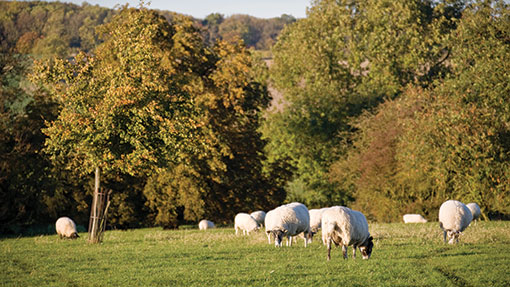How to cut concentrate costs by rotational grazing sheep

Now is the ideal time for farmers to consider implementing a rotational grazing system while fertiliser costs are low.
Farmers may be inclined to “take their foot off the pedal” on the back of lower feed and fertiliser prices, visitors were told at an open day at 2013 Farmers Weekly Sheep Farmer of the Year Keith Williams’ farm.
Speaking at the open day, organised by the Royal Association of British Dairy Farmers, Sue Buckingham from Aberwysth University’s Institute of Biological, Environmental and Rural Sciences said farmers should capitalise on low fertiliser costs.
See also: Learn how to tackle sheep lameness with Farmers Weekly’s new online test
“If you start rotational grazing when there’s a little bit of slack in the system, when prices go back up you are going to be in a situation to maintain profits,” she explained.
“Temperatures have been above average this September, but with day length decreasing and evening temperatures getting cooler there is less potential for high grass growth.”
Ms Buckingham said at current fertiliser costs of about 75p/kg of N, the “breakeven” grass growth rate would need to be about 4kg DM/ha grass for each kilogram of applied N, where grass is used to replace bought-in compound feed at a cost of £220t (22p/kg).
“On well managed ryegrass swards there is still the potential to get an economic response to fertiliser applications,” she concluded.
How to calculate rotational grazing
Step one: Measure grass to calculate grazing
- Grass available = cover – residual
- Residual sward cover for a ewe mid-pregnancy is 900kg DM/ha and 1,100kg DM/ha three weeks before lambing
- Example: 2,500kg – 900 = 1,600kg DM/ha
Step two: Calculate ewe feed needs a day
- Weight of ewe x intake needed
- A ewe needs 1.5% of liveweight dry to mid-pregnancy and 2% from mid-pregnancy to lambing
- Example: Feed for 65kg ewe, early pregnancy = 65kg x 1.5% = 0.98kg DM (1kg DM)
Step three: Work out flock needs a day
- Ewes numbers x ewe feed needed (step two)
- Example: 800 ewes x 1kg DM = 800kg DM/day
Step four: Work out how many days a paddock should last
- Grass available (step one) ÷ flock needs a day (step three)
- A 1ha field with 1,600kg grass available would provide the right amount of feed for 800 ewes in early pregnancy for two days
